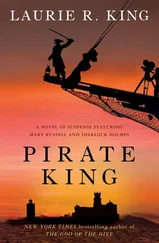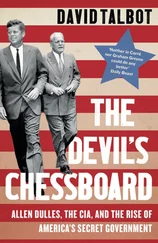Tucker’s story had, at last, acquired the burnish of outlaw mythology. The battered Rub-a-Dub-Dub had been donated to the Marin Yacht Club and was later placed in a prison museum, and the Children’s Hospital Medical Center in Oakland requested that Tucker be allowed to serve as grand marshal for its upcoming Bathtub Regatta. Amid the clamor, the F.B.I. showed up at a fancy retirement community in Lauderhill, Florida, where Tucker was believed to have been living. An elegant woman in her fifties answered the door. When they asked her about Forrest Tucker, she said she had never heard of the man. She was married to Bob Callahan, a successful stockbroker whom she had met shortly after her first husband died. When the agents explained that Bob Callahan was really Forrest Tucker, a man who had broken out of jail four years earlier, she looked at them in tears. “I told ’em, ‘I don’t believe a word you’re saying,’” she recalled, nearly two decades later. “But they had him. They shot him three times.”
An heiress to a modest moving-company fortune who looked, in her youth, a bit like Marilyn Monroe, she remembers meeting Tucker at the Whale and Porpoise, a private club on Oakland Park Boulevard. She had never encountered anyone so kind and gallant. “He came over and asked me to dance, and that was that,” she told me.
She recalled how she went to see him in prison (“still in a daze”), not sure what to say or do. When she saw him lying there, pale and bloodied, she was overcome with love for this man who, she learned, had been in a chain gang at sixteen. As he begged her forgiveness, she told me, “All I wanted to do was hold him.”
At first, awaiting trial in Miami, Tucker tried to break out of jail, removing a bar in his cell with a hacksaw and climbing onto the roof with a homemade grappling hook. But after his wife promised-to the consternation of her family and friends-to stay with him if he reformed, Tucker vowed to rehabilitate himself. “I told her that from then on I’d only look at ways to escape,” he says, adding, “She is one in a million.”
He returned to San Quentin, where he was nicknamed “the captain,” and where, for the first time, his seemingly impervious constitution began to show its age. In 1986, he underwent a quadruple bypass. Although guards stood by the door in case he tried to escape, he now considered himself strictly a legal contortionist. Years earlier, at Alcatraz, he had written an appeal that went all the way to the Supreme Court in which he successfully argued that a judge could not, at sentencing, take into account prior convictions received when the defendant lacked counsel. (“It is time we become just a little realistic in the face of a record such as this one,” Justice Harry A. Blackmun wrote in an angry dissent.) Now, with his failing health, Tucker unleashed another flurry of appeals, getting his sentence reduced by more than half. “This is to thank you,” he wrote one judge. “It’s the first break I ever got in my life. I won’t ever need another.”
He began to pour all his energy into what he saw as the culmination of his life as an outlaw: a Hollywood movie. Tucker had seen all sorts of films that echoed his life, among them “I Am a Fugitive from a Chain Gang,” “Escape from Alcatraz,” and “Bonnie and Clyde,” and he wanted, at last, to see his story enshrined in the American imagination. He began to put his exploits down on paper, five pages at a time. “No one could have written this inside story of the Rock and what really happened there unless they had personally lived it,” he wrote. He devoted two hundred and sixty-one pages to “Alcatraz: The True Story,” while working on a second, more ambitious account, which he titled “The Can Opener.” In it, he described himself as a throwback “to the highly intelligent, nonviolent type of criminal in the Willie Sutton mold,” and, more grandly, as a kind of heroic underdog, pitted against a vast and oppressive system. “Tucker’s obsession with freedom and escape has transformed itself into gamesmanship,” he wrote. “This is his way of keeping his sanity in a lifetime of being the hunted. Each new ‘joint’ is a game, a game to outwit the authorities.”
In 1993, he was released, at the age of seventy-three, and settled into the peach-colored house in Pompano Beach, which his wife had bought for them. He polished his manuscript and set up a music room in the den, where he gave saxophone and clarinet lessons for twenty-five dollars an hour. “We had a wonderful life,” his wife said. Tucker recalls, “We used to go out dancing. She’d dress up real pretty, and I’d show her off.” He composed music for her. “He has all these talents that had been wasted all these years,” she told me. From time to time, he played in local jazz clubs. “I got used to being free,” he says. But his manuscript failed to captivate people as he had hoped it would-“I called Clint Eastwood’s secretary, but she said, ‘Unless you have an agent, he won’t read it’”-and the author of “The Can Opener” increasingly seemed trapped, an ordinary old man.
Then came the day in 1999 when, at the age of seventy-eight, he painted his fingertips with nail polish, pulled his white ascot up over his face, and burst into the Republic Security Bank with his gun. “He didn’t do it for the money,” his wife said. “We had a new car, nice home paid for, beautiful clothes. He had everything.”
“I think he wanted to become a legend, like Bonnie and Clyde,” said Captain Chinn, who apprehended him after what was believed to be his fourth recent robbery in the Florida area. A court psychologist who examined Tucker noted, “I have seen many individuals who are self-aggrandizing, and that would like to make their mark in history… but none, I must admit, that I heard that would want to, other than in the movies, go out in a blaze in a bank robbery. It is beyond the realm of psychological prediction.”
After Tucker’s arrest, the police put him in semi-isolation, fearing that even at seventy-eight he might somehow elude them. Despite his lawyer’s pleas that his client could die under such conditions, he was denied bail. “Ordinarily, I would not consider a seventy-eight-year-old man a flight risk or a danger to the community,” the magistrate said, “but Mr. Tucker has proved himself to be remarkably agile.” On October 20, 2000, just before his case was scheduled to go to trial, and with his wife looking on, Tucker pleaded guilty. He was sentenced to thirteen years.
At one point, I found a report that the Department of Corrections had compiled, detailing Tucker’s life. After pages listing his dramatic holdups and daredevil escapes, it concluded with a different kind of summary:
The defendant does not know the whereabouts of [his] daughter. He stated he did not have an active part in this child’s upbringing… The defendant has no knowledge of his son’s whereabouts. The defendant did not partake in the rearing of this child.
“I thought he died in an automobile accident,” his son, Rick Bellew, told me over the phone after I tracked him down in Nevada, where he was living and working as a printer. “That’s what my mom told me to protect me.” He didn’t know the truth, he said, until he was in his early twenties, when Tucker was about to be paroled. “My mom was afraid he’d come up to me on the street and freak me out.”
He said that after his father was taken away the authorities confiscated all their furniture and possessions, which had been paid for with stolen cash. They had to move in with his grandparents, while his mother worked in a factory to support them. “He left us with nothing,” he said. “He turned our world inside out.”
After Bellew read about Tucker’s last arrest, he wrote him a letter for the first time. “I needed to know why he did it,” he said. “Why he sacrificed everything.”
Читать дальше











